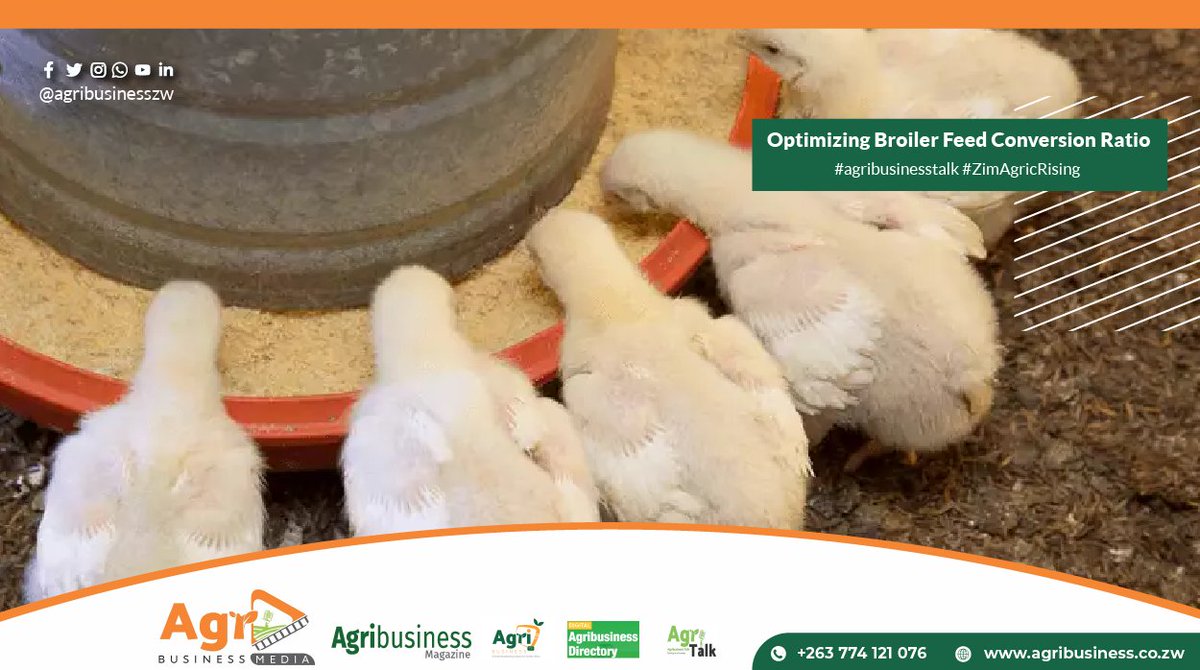
Cattle Feedlotting 101 (thread)
by L Sakutukwa +263774325213
1. BEFORE ARRIVAL OF CATTLE
Before your cattle arrive, as a minimum, the following must be in place:
1.1 Cattle pen is ready to receive the cattle. (1/10)
#agribusinesstalk
by L Sakutukwa +263774325213
1. BEFORE ARRIVAL OF CATTLE
Before your cattle arrive, as a minimum, the following must be in place:
1.1 Cattle pen is ready to receive the cattle. (1/10)
#agribusinesstalk

Stocking density ranges between 9m2 (hard floor) to 26m2 (muddy floor) per beast
1.2. Feeding troughs are in place. Trough space per animal at least 0.75 cm
1.3. Drinking troughs are in place. Fresh, clean (fluke-free) drinking water is available. (2/10)
#agribusinesstalk
1.2. Feeding troughs are in place. Trough space per animal at least 0.75 cm
1.3. Drinking troughs are in place. Fresh, clean (fluke-free) drinking water is available. (2/10)
#agribusinesstalk

It's best to start with feed that has more hay/fibre than maize/protein concentrate
1.5 Cattle handling facilities are in place including loading/offload ramp, race, crush (or similar), weighing scale or weigh belt
2. (4/10)
#agribusinesstalk
1.5 Cattle handling facilities are in place including loading/offload ramp, race, crush (or similar), weighing scale or weigh belt
2. (4/10)
#agribusinesstalk

AFTER ARRIVAL OF CATTLE
Give animals water and high fibre feed on day 1 of arrival and thereafter, do the following:
2.1. Tag your animals for ID purposes
2.2. Weigh each animal and write ID tag and weight in your record book
2.3. (5/10)
#agribusinesstalk
Give animals water and high fibre feed on day 1 of arrival and thereafter, do the following:
2.1. Tag your animals for ID purposes
2.2. Weigh each animal and write ID tag and weight in your record book
2.3. (5/10)
#agribusinesstalk

Inject vitamin B complex for stress
2.4. Give a balanced feed ration with at least 25% roughage & mineral lick block morning & afternoon (they will never run away)
2.5. Treat for both worms & liver fluke - give a dose that matches weight of animal. (6/10)
#agribusinesstalk
2.4. Give a balanced feed ration with at least 25% roughage & mineral lick block morning & afternoon (they will never run away)
2.5. Treat for both worms & liver fluke - give a dose that matches weight of animal. (6/10)
#agribusinesstalk

Record date & dose in your book. You can use e.g. Albex 10%
2.6. Dip/spray all animals and apply tick grease. Do not wait for a communal dip. Your cattle are not used to ticks in the new area. Record dip date for each animal in book and chemical used. (7/10)
#agribusinesstalk
2.6. Dip/spray all animals and apply tick grease. Do not wait for a communal dip. Your cattle are not used to ticks in the new area. Record dip date for each animal in book and chemical used. (7/10)
#agribusinesstalk

Repeat every two weeks - depending on how bad the tick situation is.
2.7. Establish contact & working relationship with your nearest livestock extension officer and Veterinary doctor
2.8. As a minimum, vaccinate your animals against Anthrax, Blackleg, (8/10)
#agribusinesstalk
2.7. Establish contact & working relationship with your nearest livestock extension officer and Veterinary doctor
2.8. As a minimum, vaccinate your animals against Anthrax, Blackleg, (8/10)
#agribusinesstalk

Botulism and Lumpy Skin disease. Again record in your book
2.9 Gradually introduce your TMR over 14 days to prevent bloat (... more to come on this)
2.10. Monitor your cattle daily, morning and late afternoon. (9/10)
#agribusinesstalk
2.9 Gradually introduce your TMR over 14 days to prevent bloat (... more to come on this)
2.10. Monitor your cattle daily, morning and late afternoon. (9/10)
#agribusinesstalk

• • •
Missing some Tweet in this thread? You can try to
force a refresh


















